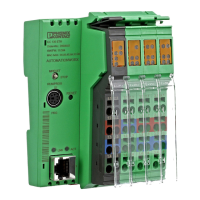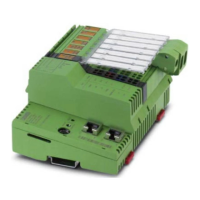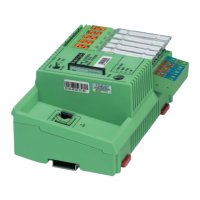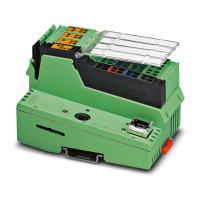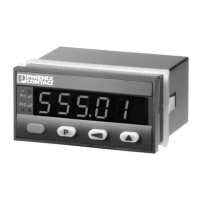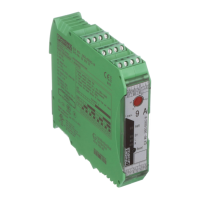28
5277A
In the READY state, the second line flashes the physical bus
location of the device (starting with 1). The Left Arrow/Right
Arrow keys allow to change to the devices. If you keep the ar-
row key pressed, the display starts to scroll in steps of one.
After reaching a physical device number divisible by 10, the
display scrolls in steps of ten. The bus is started up to the se-
lected device. Local busses can only be started up complete-
ly.
If the startup has not been carried out successfully, an error
code in HEX format is displayed in the third line, the physical
number of the device on which the error occurred is shown in
the second line. The second line displays a "0" if the error has
been located on the controller board. In the second line, the
CODE element is switched on. After a successful startup, the
third line displays the ID code of the selected device in deci-
mal format. In the third line, the CODE segment is switched
on.
When reaching a bus terminal module or the last device of a
local bus, ID and data cycles can be started by pressing the
ENTER key. In this case, the double arrow element disap-
pears. The double arrow is switched on if a device is selected
within the local bus. This means that cycles cannot be started
at the moment. If cycles have been started, ID and DATA al-
ternate in the first line.
The third line 3 displays alternately the number of faulty ID
and data cycles. The cycles can be stopped by selecting an-
other device (Left Arrow/Right Arrow).
When errors occur during the execution of cycles or the step-
by-step startup, which also lead to bus errors during normal
operation, the background color of the display changes from
green to red.
If this takes place during the startup, the second line displays
the physical number of the device in which the error occurred
and the third line shows the error code. Here, it is also possi-
ble to start cycles via the ENTER key.
If the error has occurred when running cycles, the ID cycles
will continue to run. If no error has been detected up to now,
the second line flashes the number of the device up to which
it was possible to start up the system. The third line displays
the contents of the IPMS error register. If an error has been
detected but not located, the second line flashes the word

